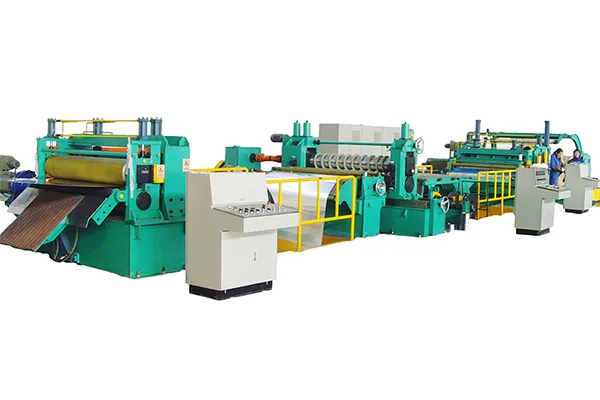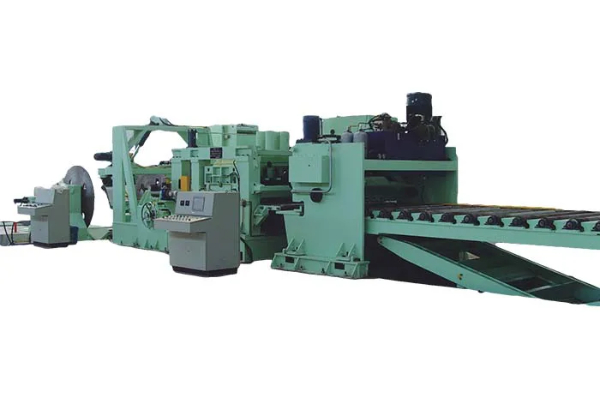
Troubleshooting Common Issues with Sheet Forming Machines
- By:Metmac
- 2024-07-23
- 156
In the realm of precision manufacturing, the smooth operation of sheet forming machines is paramount to achieving optimal results. However, unexpected glitches and hiccups can disrupt productivity and lead to costly delays. To minimize downtime and maximize efficiency, it’s essential to have a comprehensive understanding of common issues and the most effective troubleshooting strategies.
1. Material Wrinkling or Folding:
Wrinkles and folds during forming can be a result of excessive friction between the sheet and the tooling. To resolve this, check for worn or damaged tooling, or adjust the clearance between the sheet and the dies. Additionally, increasing the lubrication or preheating the sheet can reduce friction and prevent deformations.
2. Sheet Tearing or Cracking:
Tearing or cracking can occur when the material is over-stretched or subjected to excessive force. To mitigate this, ensure that the sheet is of appropriate thickness and ductility for the forming operation. Adjust the forming parameters, such as the pressure and feed rate, to reduce stress concentrations.
3. Tool Wear or Damage:
Repeated use of tooling can lead to wear or damage, affecting the accuracy and quality of the formed parts. Regularly inspect the tools for wear, cracks, or other defects. Replace or repair damaged tools promptly to prevent further issues.
4. Hydraulic System Leaks or Malfunctions:
Hydraulic systems are responsible for generating the force required for forming. Leaks or malfunctions can disrupt the process and cause inconsistent results. Check for leaks, replace worn seals, and ensure that the hydraulic system is properly maintained and serviced.
5. Electrical Faults:
Electrical faults can range from minor malfunctions to major breakdowns. Perform routine electrical inspections, check for loose connections, and test the functionality of electrical components. Consider using a multimeter to troubleshoot specific electrical faults.
6. Software Glitches:
Modern sheet forming machines often rely on computer-controlled software. Software glitches can cause unexpected errors or interruptions. Update the software regularly, perform backups, and contact the manufacturer for technical support if necessary.
7. Operator Error:
Human error can also contribute to common issues with sheet forming machines. Ensure that operators are properly trained and follow established procedures. Provide clear instructions, display visual aids, and encourage operators to report any unusual behavior or concerns.
By troubleshooting common issues effectively and implementing preventive measures, manufacturers can enhance the reliability and productivity of their sheet forming machines. This not only reduces downtime but also improves product quality and overall operational efficiency.
-
Sheet Metal Rolling Machine for Sale: Finding Precision and Durability with METMAC
2025/12/09 -
Press Brake Bending Machine: Engineering Precision with METMAC
2025/12/09 -
CNC Sheet Bending Machine: Precision Redefined with METMAC
2025/12/09 -
Sheet Metal Roll Forming Machines: The Precision of METMAC Engineering
2025/12/09
-
Advanced Sheet Metal Rolling, Laser Cutting, and Folding Machines for Precision Fabrication
2025/10/31 -
High-Performance Sheet Metal Bending and Cutting Machines for Modern Fabrication
2025/10/31 -
High-Quality Sheet Metal Equipment for Sale: Efficient Solutions for Modern Manufacturing
2025/10/31 -
High-Performance Sheet Metal Equipment for Sale: Forming and Shearing Solutions for Modern Fabrication
2025/10/22
-
Integrating Automation with Rectangular Duct Machines for Enhanced Productivity
2024/05/11 -
Metal Shear Machines- Essential Tools for Precision Metal Cutting
2024/05/11 -
Understanding the Role and Function of Steel Strip Slitting Machines
2024/05/11 -
Maintenance Tips for Longevity of HVAC Duct Machines
2024/05/11
-
A Guide to the Latest Innovations in Sheet Metal Folding Machines
2024/11/29 -
Key Features to Consider When Investing in a Sheet Metal Folding Machine
2024/11/28 -
Enhancing Precision with Advanced Sheet Metal Folding Machines
2024/11/27 -
How to Choose the Right Sheet Metal Folding Machine for Your Workshop
2024/11/26







